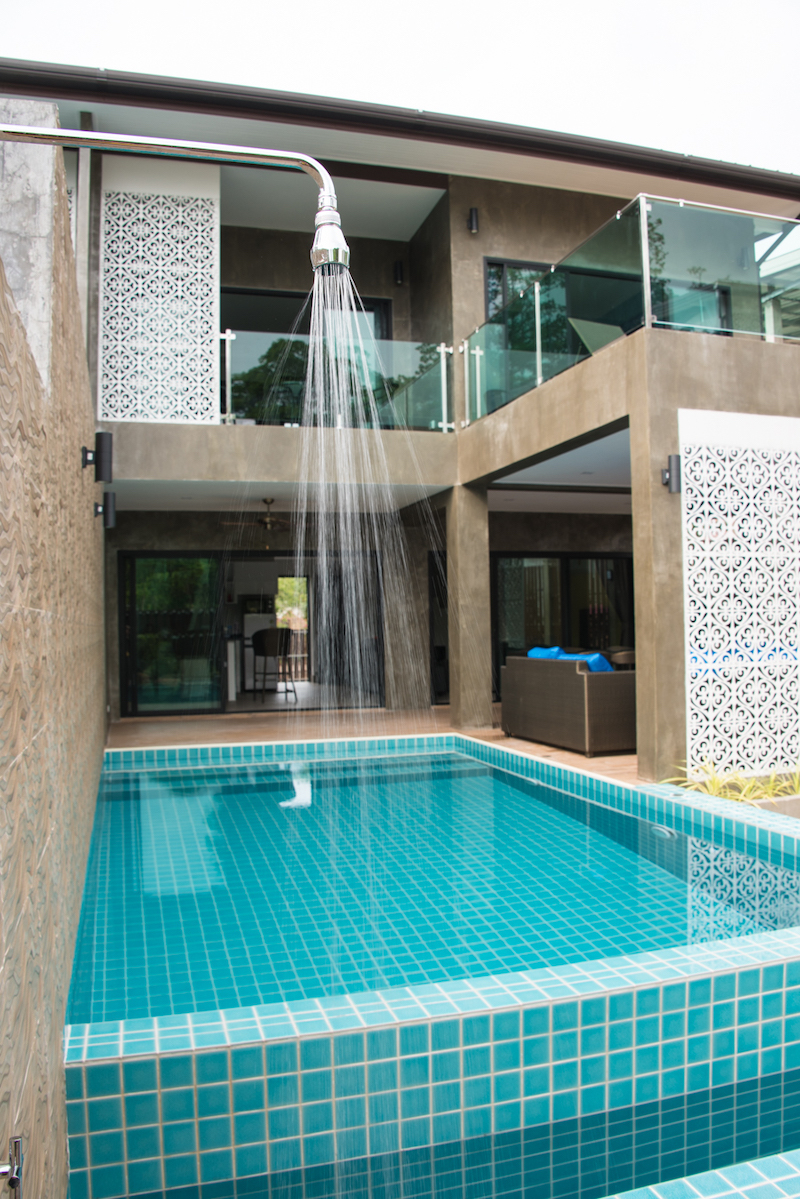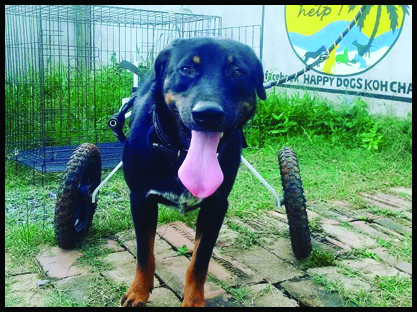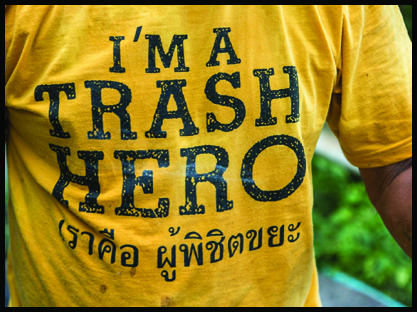
Khao Khitchakut National Park is located 28 km northeast of Chanthaburi city in Khao Khitchakut District, at about one and half hours by car from Trat. The park’s area is 59 square kilometers. The highest point is the Khao Phra Bat peak at 1,085 meters.
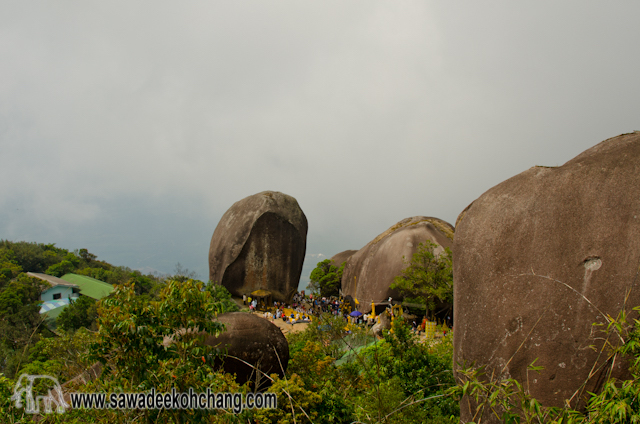 |
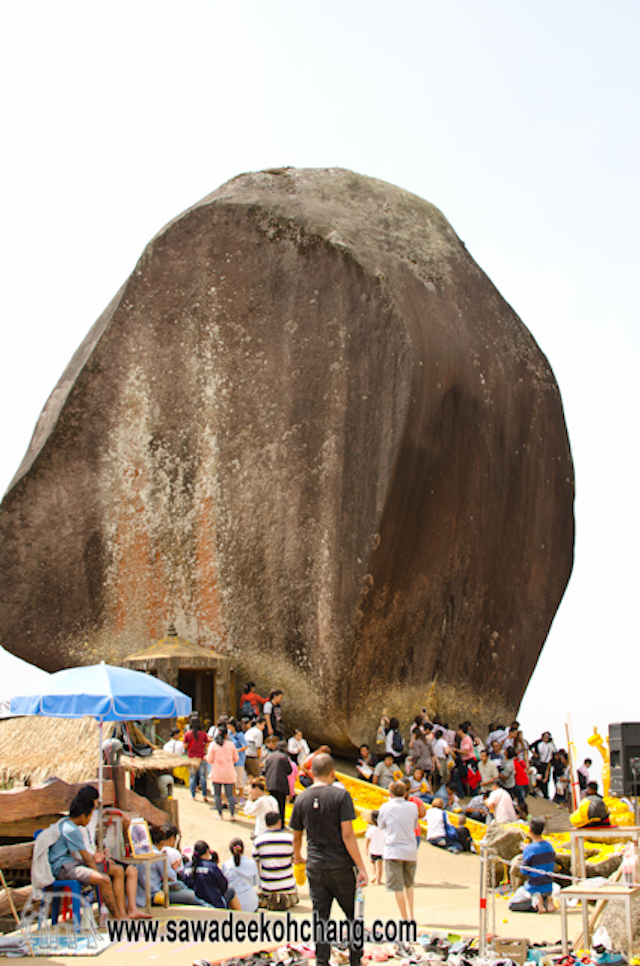 |
The ceremony to worship the footprint of Buddha is held every year, and it lasts for a couple of months between Chinese New Year and Magha Puja day (late January to March).
Thomas Koch Travel & Adventure, for example, can organise the trip during this period. They come to pick you up early in the morning and you come back in the evening.
If you have not been there yet, do not miss this once-in-a-lifetime opportunity. I guarantee you will not be disappointed!
Paying respects to the Buddha’s footprint on the mountain peak of Khao Khitchakut is a yearly ritual for many Thais. An act of making a pilgrimage to the Buddha’s footprint equates to appearing before the Lord Buddha and is considered a great meritorious deed. Consequently, thousands of people have journeyed to the peak of Khao Khitchakut, to pay reverence to the footprint of the Buddha.
It’s believed that visiting the footprint equates to appearing before the Lord Buddha and those who make the trek are granted 1 wish. These spiritual beliefs are what draw thousands to make the climb every year.
Tourists paying respects to the Buddha’s footprint on Khao Khitchakut are warmly welcomed by locals. In fact, one can usually count the number of foreign visitors on 2 hands amongst the tens of thousands of Thais visiting there. Thais of all ages will visit Khao Khitchakut. It is not uncommon to pass elderly Thais walking the mountain with the assistance of other family members.
The trip will start early in the morning with a pick-up at your resort, before sunrise. You will then catch the early ferry and see the beautiful sunrise on the east coast of Koh Chang.

After about one and a half hours, you will arrive at the starting point at Phluang temple. There are lots of stalls selling flowers, food, clothes, and religious items.
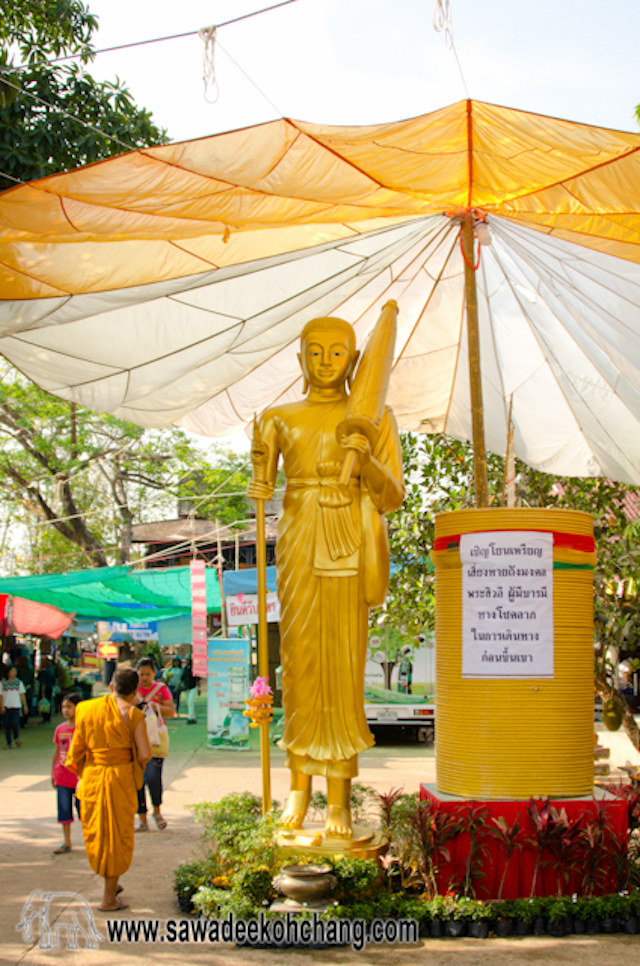
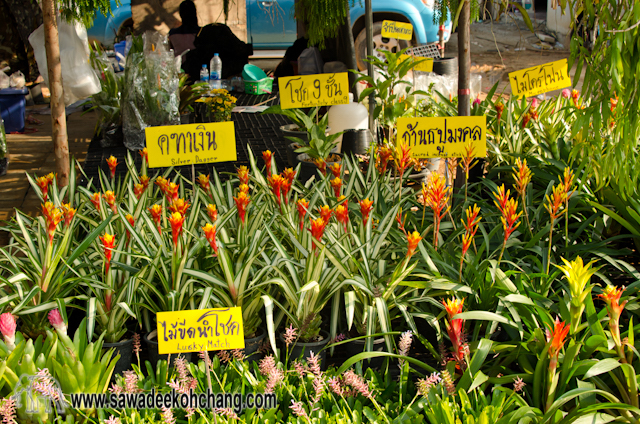 |
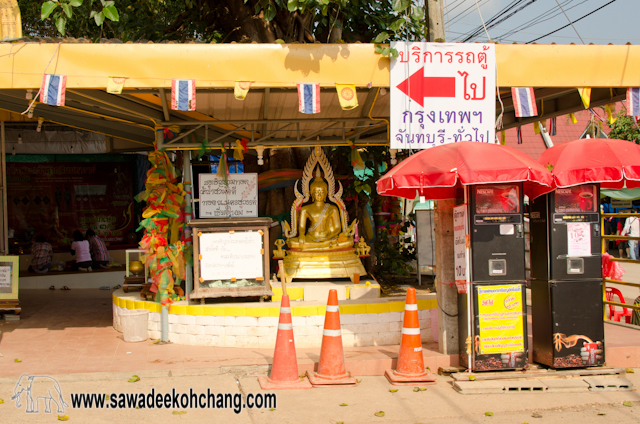 |
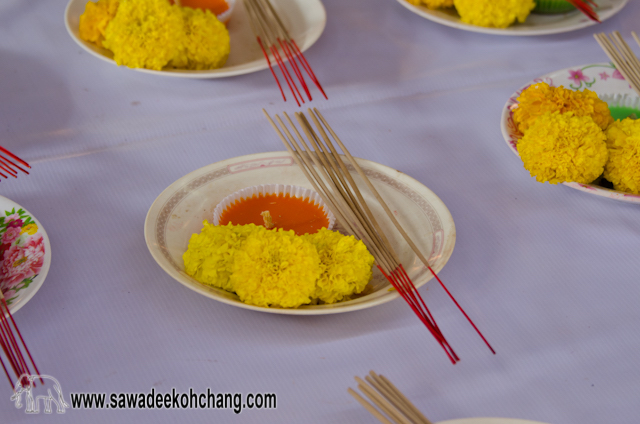 |
You have to get on a 4-wheel pickup that takes you on an eight-kilometer steep route.
The ride is a rough one, inclines of an estimated 30%, and drivers need special training. The road is two-lane, but the sense of direction changes between left-handed and right-handed when cars pass each other. There is no roof in the passenger area. A walkway for pedestrians is parallel to the road.
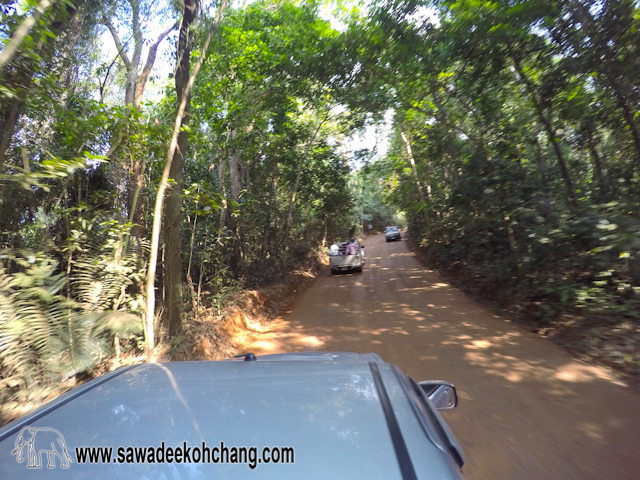
Near the top, there is an area where passengers get off (when coming up) or wait for the car (for going down). The last pray before starting the long walk.
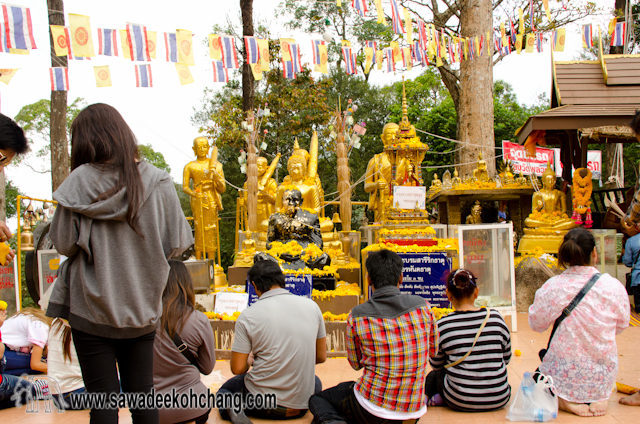
The first kilometers of the hike is a unique experience, seeing faithful pilgrims of all ages walking up the trail, listening to the hundreds of lined bells with a constant ring as climbers tapped coins, three times each, smelling the incenses and fragrant flowers (marigolds and carnations) sprinkled about the path made portions of the climb feel like you were walking directly into a temple.
 |
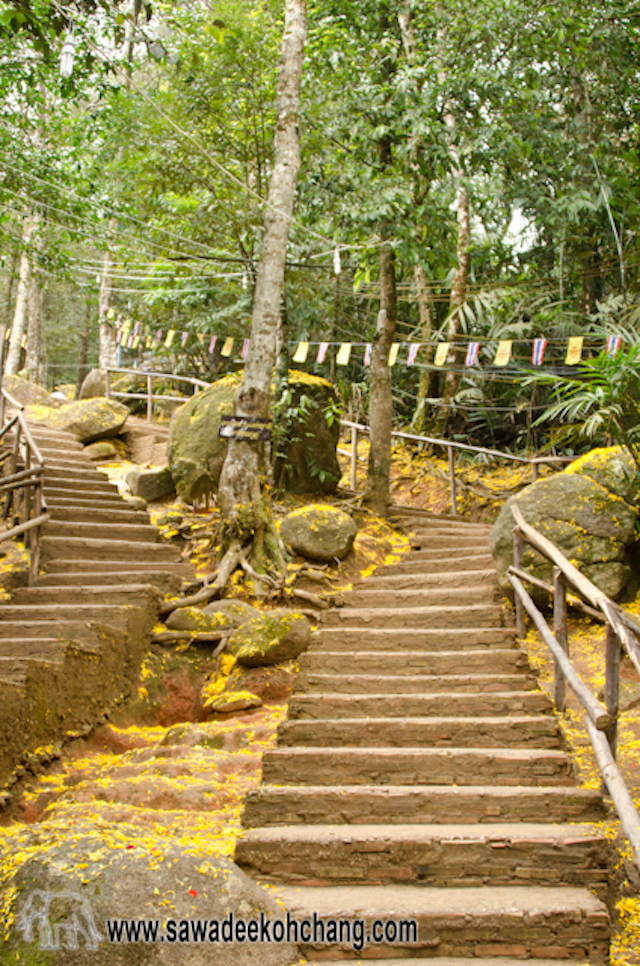 |
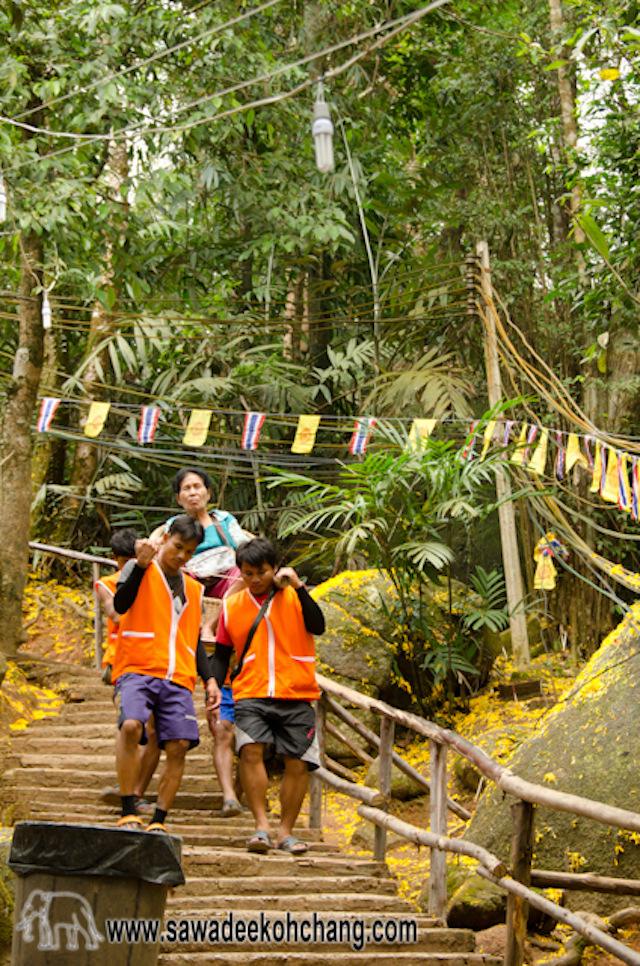 |
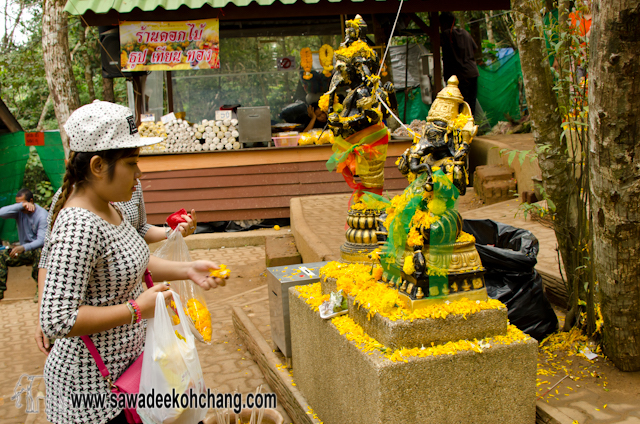 |
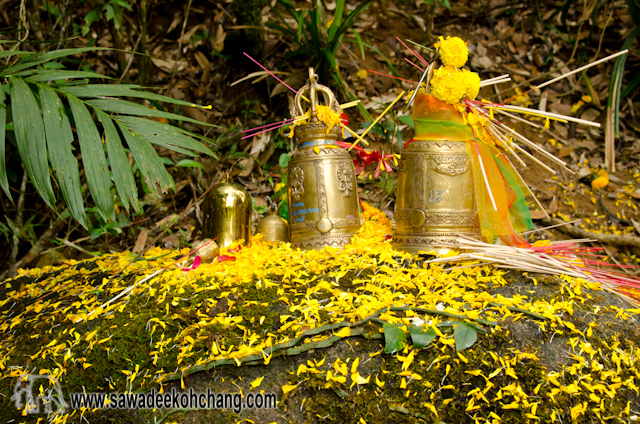 |
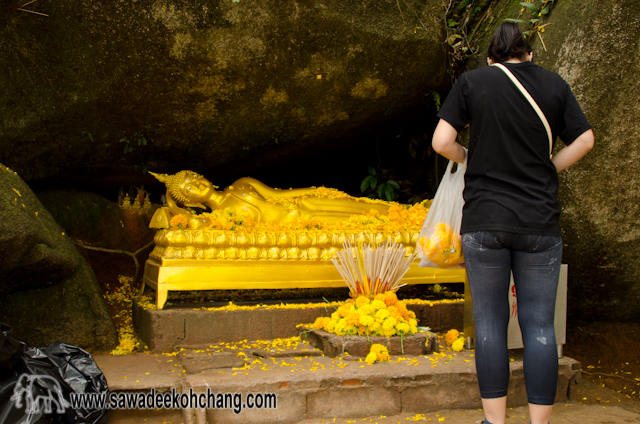 |
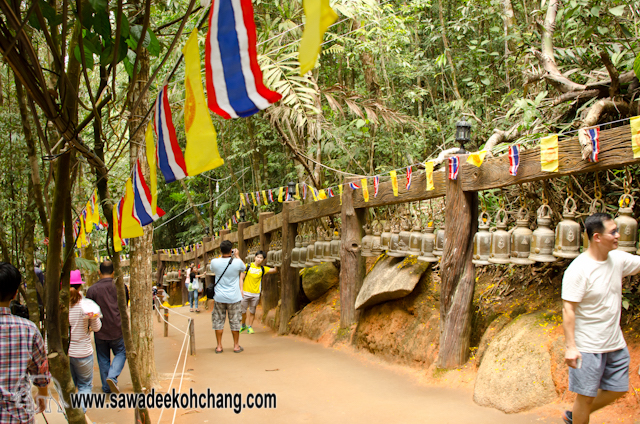 |
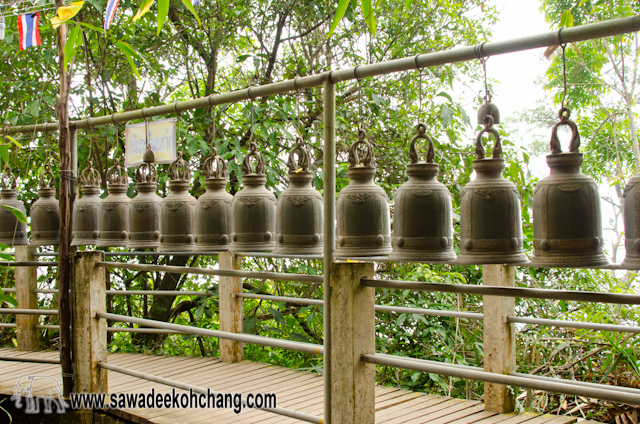 |
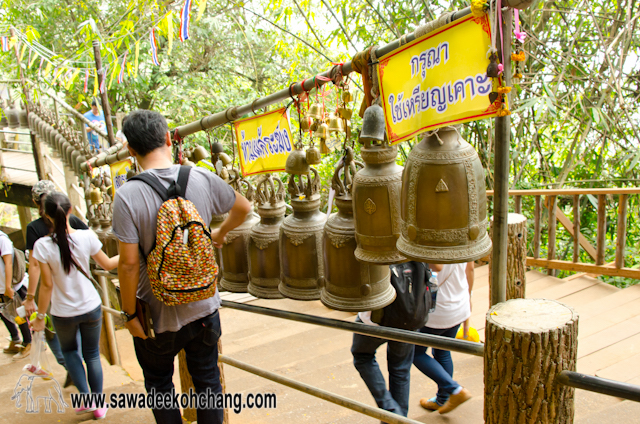 |
There are many shops along the way selling religious items but also fresh drinks and noodle soups.
On the mountaintop, it is possible to spot several geological phenomena related to Buddhist myths, including the stone pagoda, the stone in an upside-down monk’s alms-bowl shape, the hermit cave, Indra’s motor racing tracks, as well as gigantic stones that look like a turtle or an elephant.
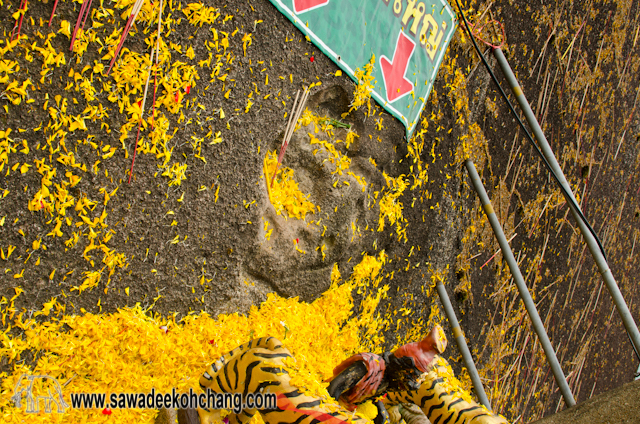 |
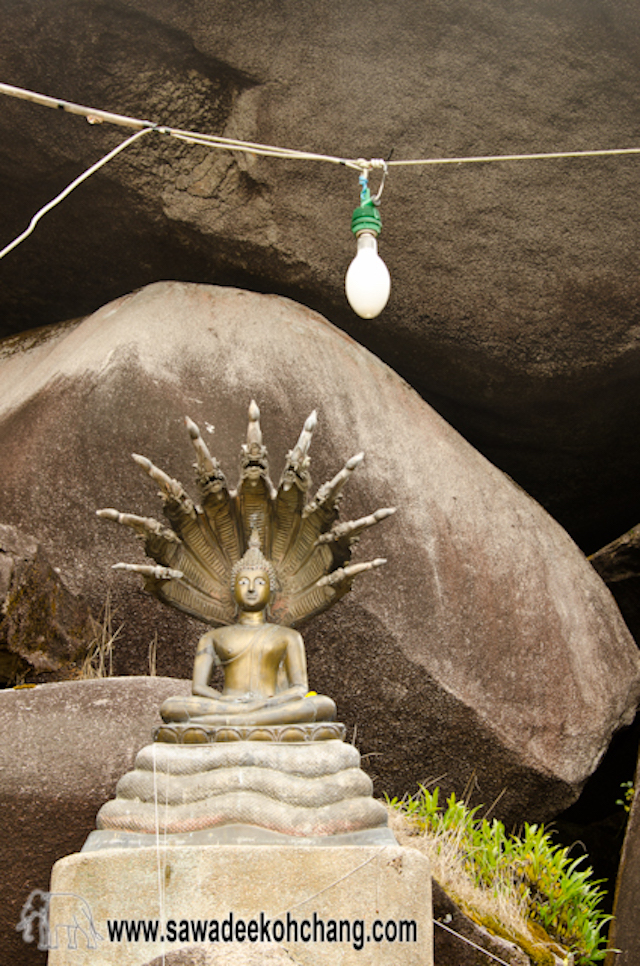 |
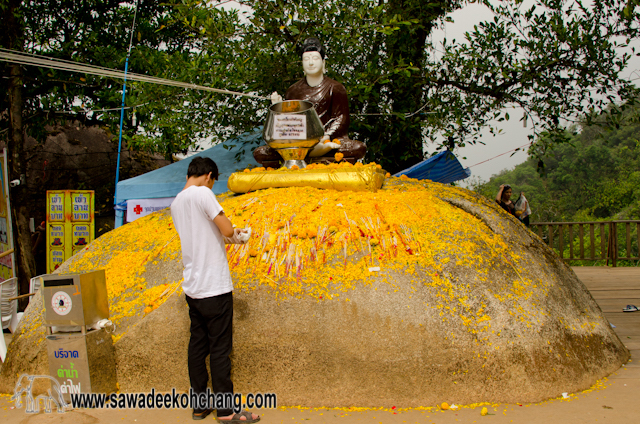 |
From the breezy peak, you can easily see the Chanthaburi center. Unfortunately, clouds can appear and disappear very fast.
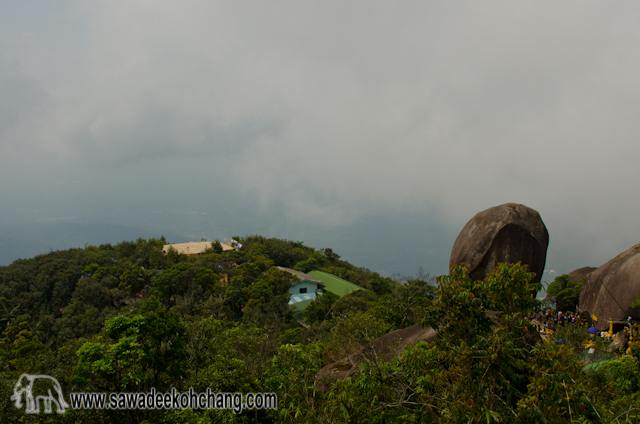 |
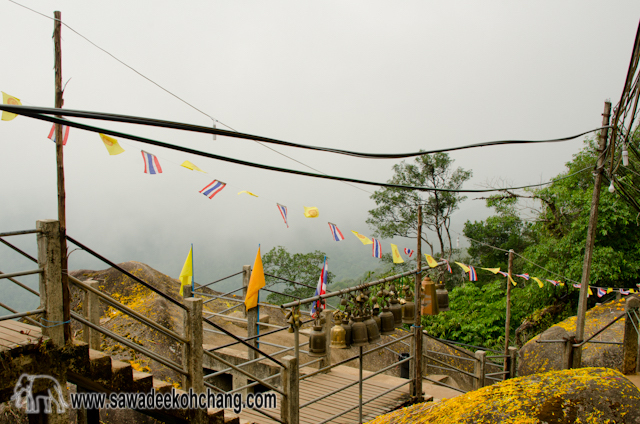 |
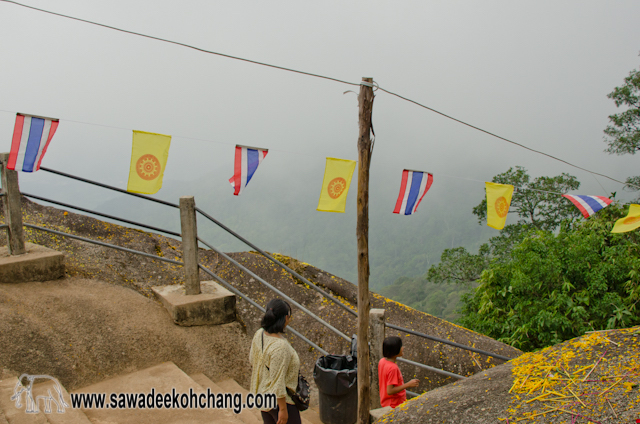 |
Being perched atop the plateau, among the masses praying, chanting, and trying to get close to the Buddha’s footprint to make their offerings is a surreal experience.
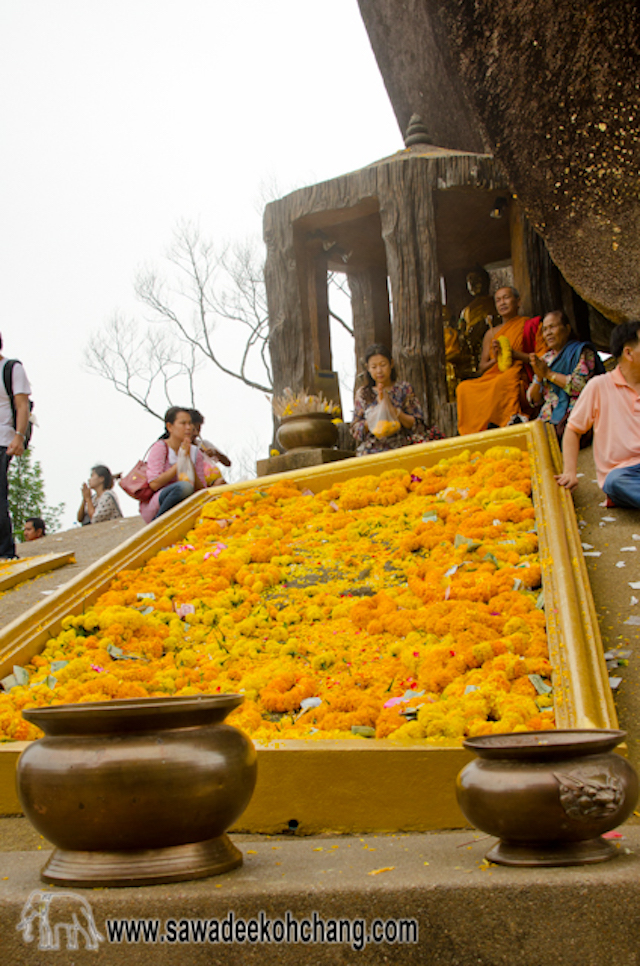 |
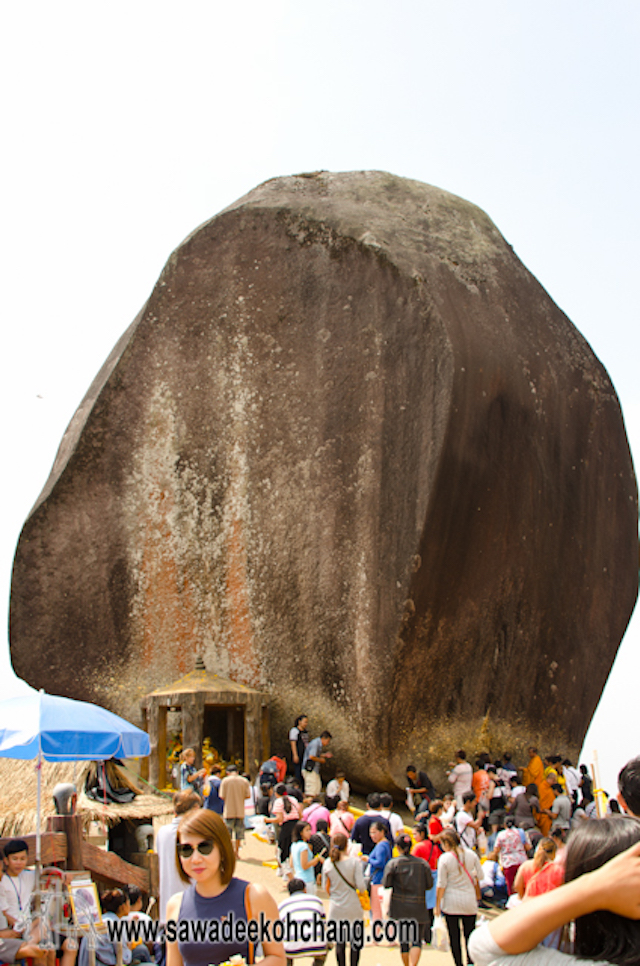 |
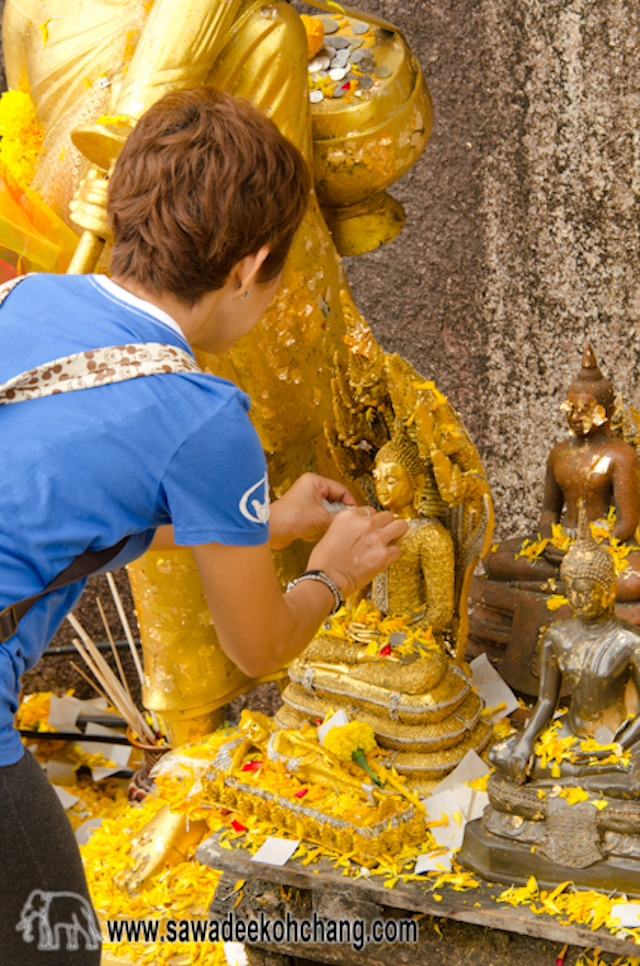 |
From here you have another 4.5 km to go to reach the sacred wishing scarf at the end of the trail.
The narrow path, which is literally cut through the forest, climbs up and down the mountain passing by many smaller shrines. Here, followers continue to demonstrate their spiritual devotion by making offerings and performing additional acts of religious significance. The loud chirping insects (cicadas) sound will follow you on the way.
 |
 |
 |
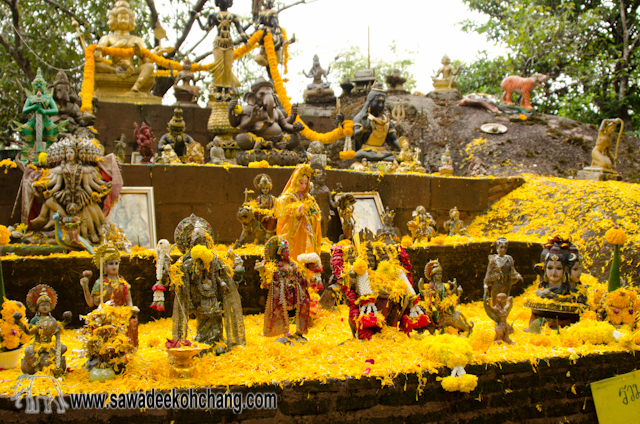 |
 |
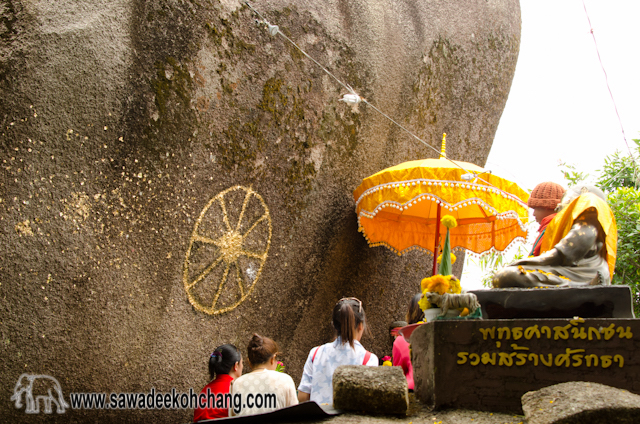 |
Pa Daeng (ผ้าแดง, red cloth) is at the end of the trail, where you will write your wishes on a red cloth.
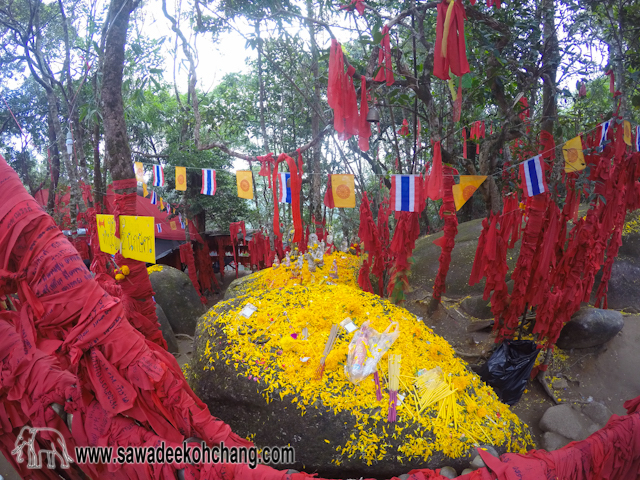 |
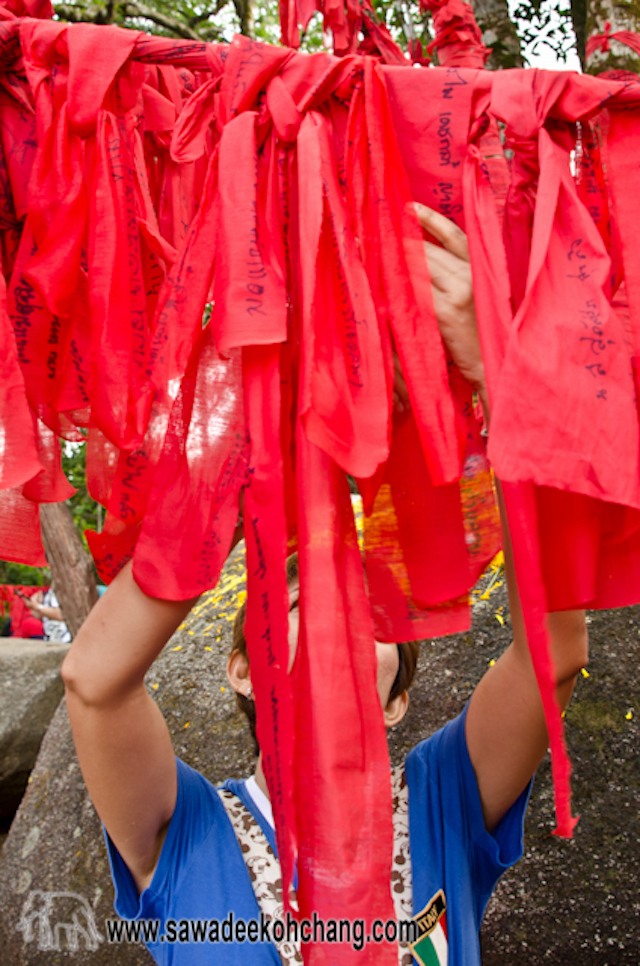 |
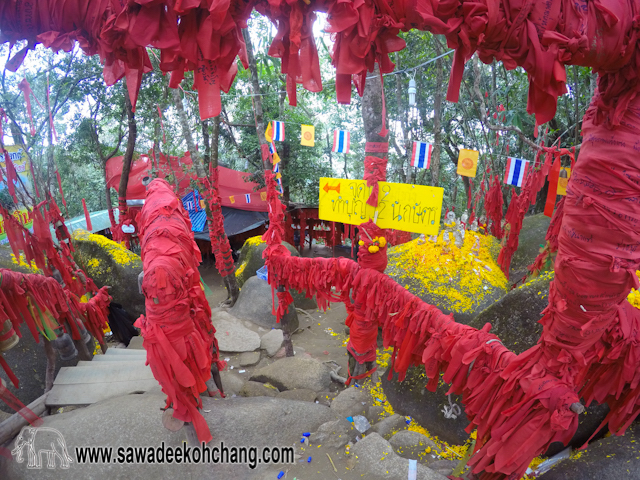 |
If you are in good health condition it will take about 2 hours to walk up to the end of the trail and more if you spend time at each shrine. And then you will need to take the same path to go back to the starting point to get a car to go down the mountain.
 |
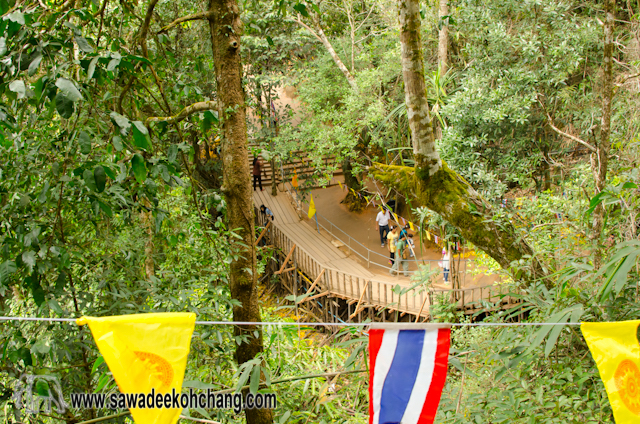 |



